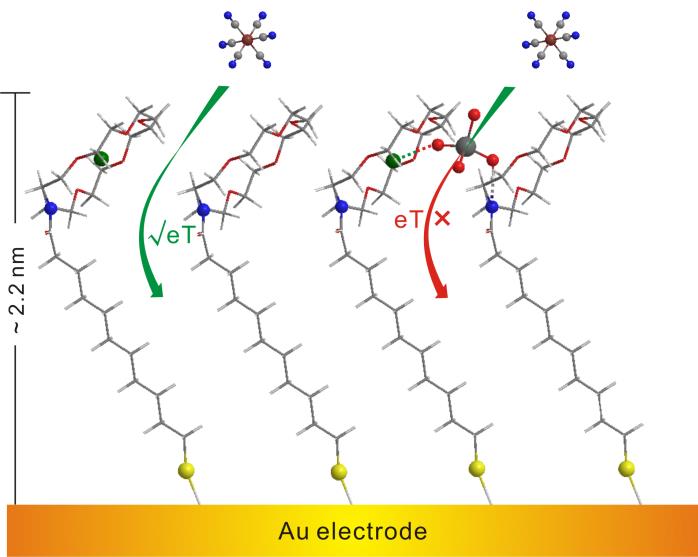Recently, the research group has achieved new progress for the detection of Cr (VI) by electrochemical methods, which is leaded by the 973 chief scientist of Jinhuai Liu and deputy director of Xingjiu Huang of Hefei Institutes of Physical Science, Chinese Academy of Sciences.
For a long time, chromium (VI) pollution in groundwater has become a worldwide problem, which is seriously harmful to human health. Therefore, realizing the detection of Cr(VI) in rapidity, trace amount, high sensitivity and selectivity is significant to precisely evaluate the environmental pollution while it also receives great attention due to the difficulties. Electrochemical methods are widely used for detection of Cr (VI) due to their particularities of rapidity, high sensitivity, portability, etc. However, previous reports always using stripping voltammetry, requiring the noble-metal electrodes or noble-metal nanoparticle-modified electrodes with homogeneous morphology; meanwhile the detection need to be carried out under harsh acid conditions due to the limitation of redox reaction.
Utilizing the properties of the special interaction caused by the crown ethers and Cr (VI), resulted in the inhibition of electron and mass transfer on the surface of the electrode, the researchers realize the detection of Cr (VI) with high sensitivity and selectivity by the method of the electrochemical impedance spectroscopy(EIS). In the pH range below 5, Cr(VI) mainly presents in the form of HCrO4− ion, in the pH value 5.0 of the solution, one molecular azacrown could form a complexation with K+, according to host guest interaction principle. Thus, after introduction of Cr(VI), a sandwich complexes is formed via N∙∙∙H-[ HCrO4−]-K+, through the effect of hydrogen bonding and electrostatic interaction, which is responsible for the inhibition of electron transfer, resulting in an increase impedance to achieve a sensitive and selective detection of Cr (VI).
This research work was accepted for publication by the Analytical Chemistry, the American Chemical Society (Anal. Chem., 2015, 87, 1991-1998). It was supported by the National Basic Research Program of China, the National High Technology Research and Development Program of China (863 Program), and the National Natural Science Foundation of China.
Papers link:http://pubs.acs.org/doi/pdfplus/10.1021/ac504449v

Schematic illustration of strategy for the detection of Cr(VI) based on azacrown monolayer self-assembled on Au electrode.
